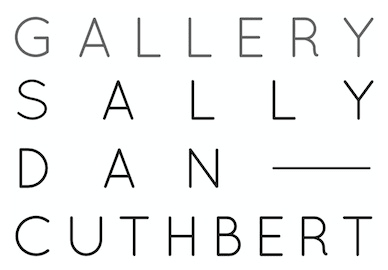Donna Marcus is well known for her public art and now a major exhibition at HOTA Gallery on the Gold Coast explores her influences and inspiration
Queensland artist Donna Marcus is best known for her sculptures in public places from Saudi Arabia to China and all over Australia. Brisbane audiences will know her as the artist behind the large spherical sculptures collectively titled Steam (2006) scattered through Brisbane Square at the top of the Queen Street Mall. These sculptures are made from 7000 replicated cast aluminium vegetable steamers and, at any time of day or night, visitors may be seen recognising these materials and noting their transformation. In the evenings they radiate light. The work of Marcus is now being celebrated in a major exhibition at HOTA Gallery on the Gold Coast called Donna Marcus: Radiate.
Artists become defined by their aesthetic – the way their work cleaves to particular materials, patterns or subjects. Why do artists make what they make? Sometimes this is explained, at least in part, through their biography or life events or through an exhibition such as this show which features a family story at its heart. At the entry to this showing of 20 years work are two historic paintings, one by Australian modernist Roland Wakelin (1887-1971) and the second by post-impressionist Percy Lindsay (1870-1952). Both depict Berry’s Bay in Sydney Harbour and, in the Lindsay, a ship called SS Gabo is moored.
Marcus’s mother Thora lived on the Gabo from 1929 while her grandfather (and his team) gradually dismantled its metal fittings for sale. There’s a line-connect from that family narrative of reuse to the way Marcus has made her sculpture over the past 35 years. Like her great-grandfather, Marcus has made obsolescence her business. “I had a sudden realisation of the possible genetic predisposition to scrap metal!” she says.
Throughout her career Marcus has salvaged old aluminium cookware, a collecting process to creating sculpture that use colour, repetition and patterning. There are many ideas at work.
In Radiate her materials are divided between those of modernism, aluminium and plastic, and the ancient traditions of ceramic and vitreous enamel. Her objects evoke domestic environments such as post-war kitchens and bathrooms, but also the industrial, including aircraft.
These realms, traditionally male and female, are recreated equal within the sculpture, with an inherent feminist undercurrent. Yet their poetic lyricism emerges from the assembly of colour and repetition (modernist tropes), the vibrancy of these objects from the past (which reflect, absorb or emit light) and their implied metallic musicality.Marcus’s assemblage sees discarded objects become compelling in their ability to create new narratives.
Her recent constructions inspired by the Gabo family connection are eight silver/black aluminium works that are backlit. In their large scale and form they respond to Marcus’s mother’s memories of this time and an historic newspaper story about Thora’s life on board, which noted the domesticity suggested by lace curtains that adorned the vessel’s windows.
“I’ve always been interested in the link between small and large histories and intersections between the humble and the grand,” Marcus says. “My mother’s narratives around the Gabo were the starting point for the work but then uncovering the larger stories around Berry’s Bay during the 1930s became equally important.
“Objects and materials have unrelenting stories to tell. The bits from pressure cookers, coffee percolators, shower roses and all manner of perforated sieves assembled in GABO speak to the history of 20th century design and recall the aspirations of modernism.” Three decades ago, when Marcus began assembling old kitchenware to make sculpture, this family narrative was far from the front of her mind. Only in the past 10 years has she explored this parallel, with GABO purpose-built to celebrate this legacy.
Finely cut in metal, the delicacy of lace is evoked in these works, all of which resonate with lively geometry, repetition of motifs and vibrancy that suggests the metaphysical qualities of stained glass. Dark, repetitive patterns, perforated with light, vibrate together like groups of atoms, celebrating the inexorable forces of which we are so rarely aware.


